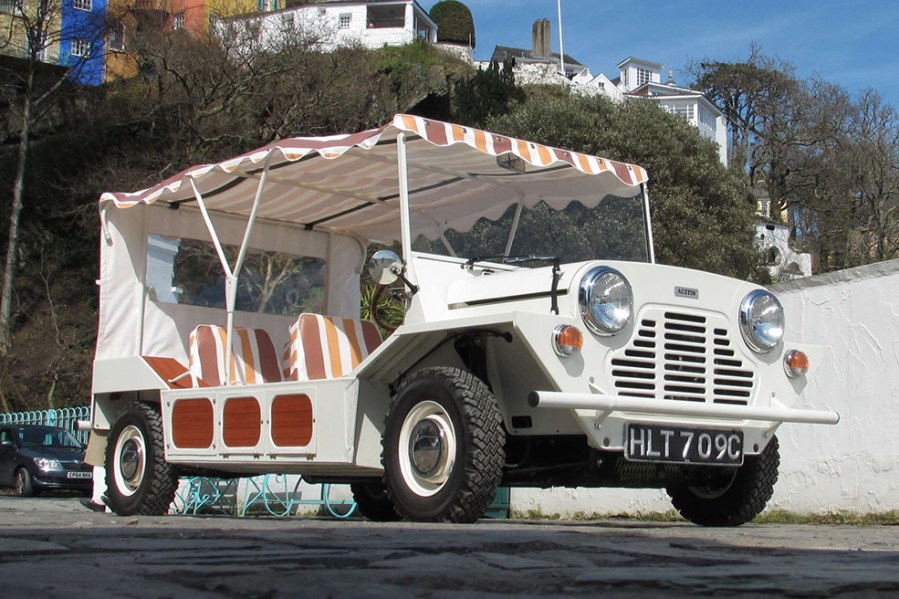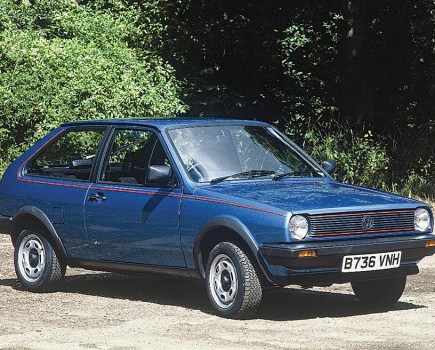We pick out the best classic cars to arrive on the scene in 1964, each celebrating its 60th birthday in 2024
Mini Moke (1964–1993)
With the development of the Mini, Alec Issigonis always intended to create several vehicles on the platform, including a utilitarian derivative to eat into the Land Rover’s military market. Codenamed ‘Buckboard’, prototypes were shown to the British Army in 1959, proposed as a parachute-droppable vehicle – similar to Honda’s Monkey Bike – but the low ground clearance and power put the military off.
Disappointed but not disheartened, BMC tweaked what was now called the Mini Moke and pitched it as a light commercial vehicle for the general public in 1964. Unfortunately, its lack of cargo space led to Customs and Excise classifying it as a passenger car, therefore attracting the associated purchase tax. Given the canvas roof, bare-bones interior and lack of doors or windows, the Moke looked expensive compared to a regular Mini, let alone any number of other ‘normal’ cars that shielded you from the elements. Unsurprisingly, just 14,500 Mokes were built before British production ended in 1968.
However, the Moke found a niche as a fun recreational vehicle when it arrived in 1964, especially in hotter destinations. Indeed, it had plenty of appeal – the ultra-low weight, combined with variations of the eager A-Series engine and the excitement brought by being so low to the ground and having no substantial bodywork around you, made the Moke a hoot to drive.
Of those British-built cars, only around a tenth were sold domestically, and in 1966 production began in Australia too. Over 26,000 Mokes were built Down Under until 1982, complete with the 1275cc engine in later ‘Californian’ models, before production restarted in Portugal in 1983. The Moke continued under the control of Austin-Rover Portugal until mid-1989, but despite being profitable, the rights were sold to Italian company Cagiva, which produced practically identical Mokes in Portugal from 1991 through to early ’93.
Given its rarity and almost unique charms, Mini Moke values are unsurprisingly rising; the cheapest examples hover around £15,000, but you can double that to over £30,000 for a fully restored British-built example. In 2021, the Moke that featured in The Prisoner sold at auction for £69,750 – almost ten times what it cost new in today’s money.
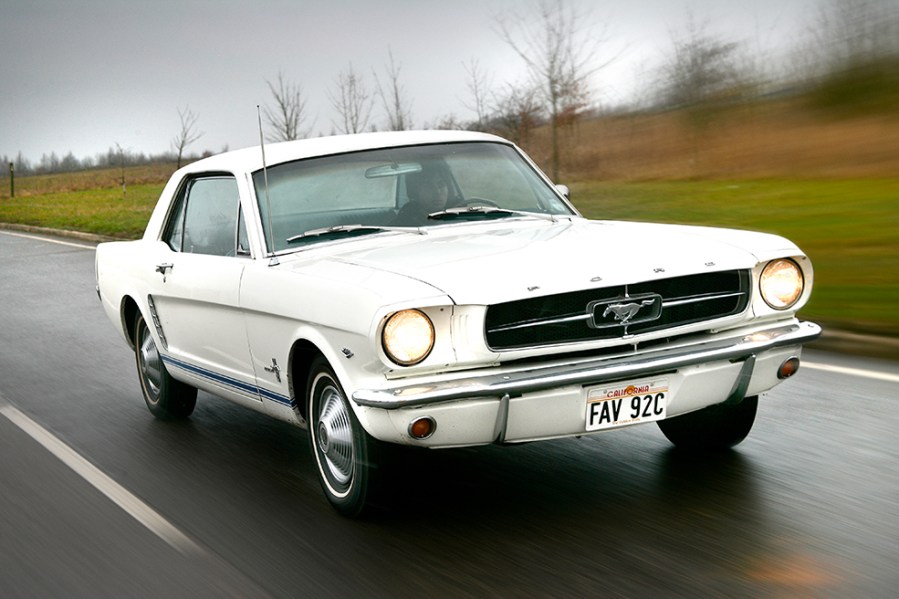
Ford Mustang (1964–1973)
After the post-war boom in 1950s America, land barges from Cadillac, and Buick joined Ford’s own Lincoln models in ruling US roads. Ford Vice-President Lee Iacocca noticed a gap in the market, with ‘Baby Boomers’ not interested in massive luxury cars, so he ordered development of a smaller car, with five goals: bucket seating for four (the traditional bench seat considered staid), a floor-mounted shifter, weight below 2500lbs (1100KG), a length shorter than 180 inches (five metres) and a cost of below $2500, plus numerous luxury, power and comfort options on top.
The result come 1964 was the Mustang, a stylish two-door in either coupe or convertible form that boasted compact dimensions, light weight and an affordable price tag, as per the brief. Spec the base straight-six hardtop with manual transmission and you could get into America’s hottest new car for $2368, equivalent to £18,000 in today’s money. The Mustang spoke to younger buyers, with the advertising promoting a feeling of freedom and European glamour. Small wonder it became the fastest-selling car in history, with 22,000 orders on day one.
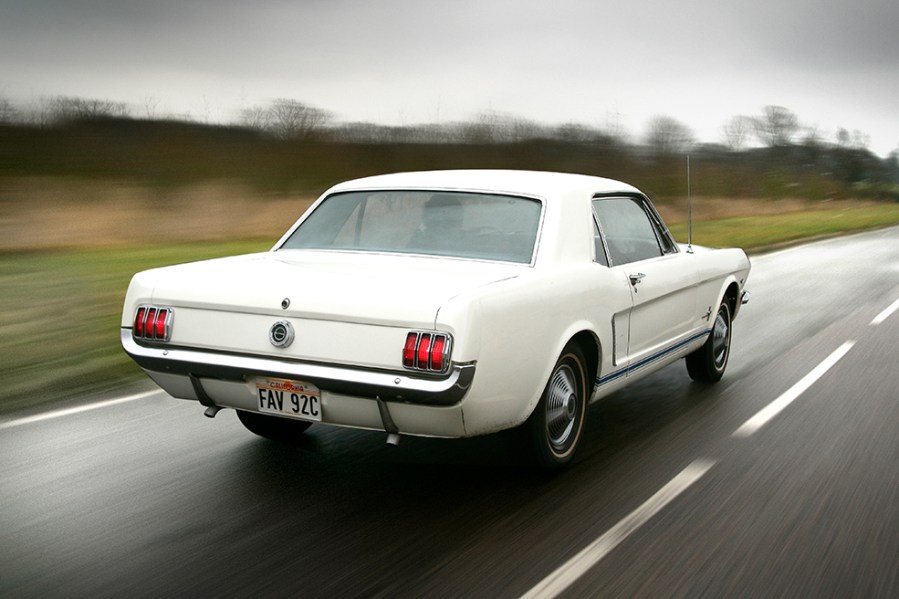
True, its crude live-axle, soft suspension and vague steering made the Mustang better-suited to Route 66 than Silverstone, but the style and affordability, not to mention its soundtrack and performance in V8 guise, cemented its popularity. The Mustang endures to this day, with an uninterrupted 60-year production run over seven generations, countless movie roles and motorsport heritage, thanks in no small part to the late, great Caroll Shelby.
With restrictions lifted in the 1960s, US Fords could be purchased by UK buyers via Ford’s import centre in Brentford and later Mayfair. The Mustang was one of the first American cars to be imported in large quantity, albeit in left-hand drive for the first-generation cars, and they’re easy to find already UK-registered. Most sought-after are the earliest “1964 ½” cars, but if the looks matter most, a six-cylinder hardtop can be on your drive for £16,000. If the V8 soundtrack is a must, however, a 289 will cost you around £20,000, a bit of a bargain.
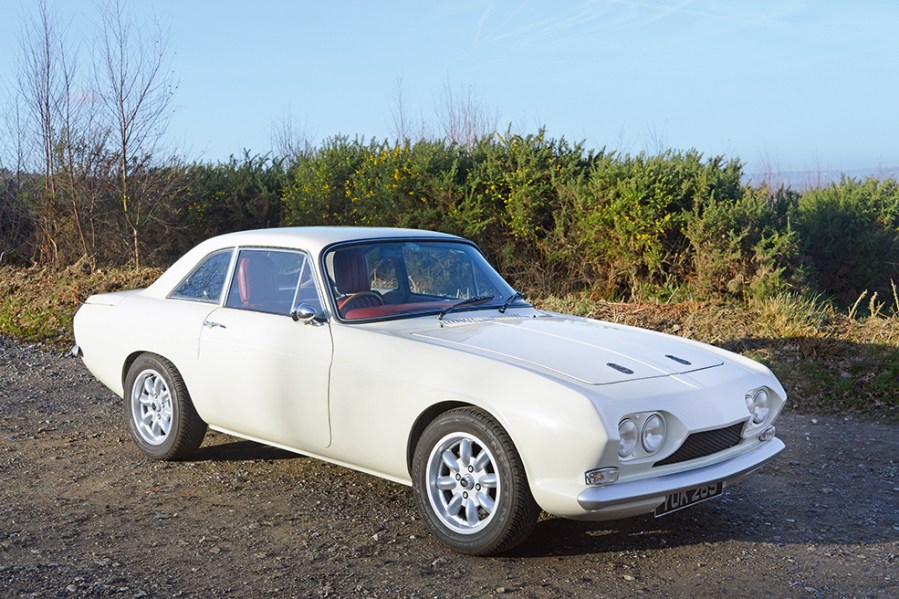
Reliant Scimitar GT (SE4) (1964–1970)
When Reliant’s MD, Ray Wiggin attended the 1962 British Motor Show, he never expected to find what would become one of his company’s cars. The Ogle SX250 was a one-off coupe commission based on Daimler SP250 underpinnings, designed by David Ogle. After Daimler turned the design down, Wiggin approached Ogle for the rights, and after some tweaks to fit the Reliant Sabre chassis and mechanicals, the Scimitar GT was born. The elegant lines clothed the Sabre’s 2.6-litre straight-six, now equipped with triple SUs to produce 120bhp. The strong performance, upmarket interior and classy looks were well-praised at the 1964 Earls Court show.
Come 1966, Ford had replaced the 2.6-litre engine with the new 3-litre ‘Essex’ V6, prompting some tweaks by Reliant to accommodate it into the Scimitar. The lower wishbones were moved, the tower structures and cross members were reinforced and an anti-roll bar was fitted, with the engine itself mounted further into the bulkhead to improve weight distribution and technically make what was coined the ‘SE4A’ front-mid-engined. Small interior modernisations in the form of anti-dazzle trimmings and improved ventilation saw the revised Scimitar met with positive comments by Autocar, who summed the car up thus: “Lusty, low revving engine…effortless cruising at three-figure speeds. Ride and handling very good, and much improved over the earlier car. Light, accurate steering and first-class brakes with powerful servo.”
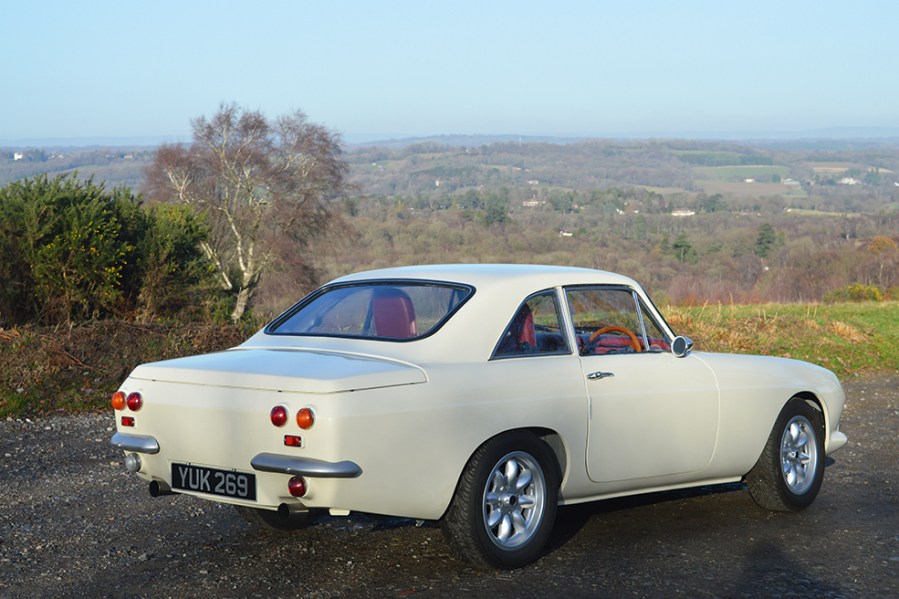
Later on, Reliant did some more work to try and improve the interior, mainly the centre console and switch layout, thus creating the SE4B. There was also the SE4C variant, launched in 1967 and equipped with the 2.5-litre V6, which still offered a 110mph-plus top speed but reduced the price by £120. Just 118 were built before production ended, making this the rarest variant. Just over 1000 GTs were built across all variants until production ended in 1970, by which point the pioneering SE5 GTE sports estate was available and became a far bigger seller.
The stylish and charming Scimitar GT is a rare beast these days – we found just one SE4A for sale at time of writing, priced at £25,000. With so few built from 1964 onwards and likely low-double-digit numbers remaining, however, you’ll surely struggle to find something else so exclusive for the money.
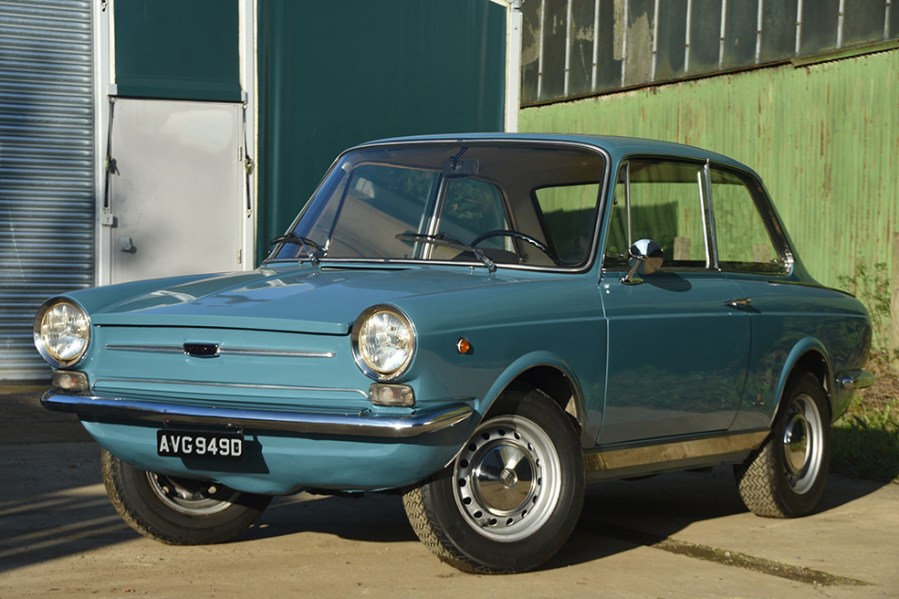
Fiat 850 (1964–1973)
Although the Nuova 500 of 1957 was such a memorable success, it took its blueprint from the larger 600, which had been launched two years earlier in 1955 and was also the work of genius designer Dante Giacosa. A million 600s were produced in as little as six years, on the way to some 2.7 million in total – and that’s not including the many variants built outside of Italy under licence, which swelled the total to almost 5 million.
Unsurprisingly, Fiat wanted to build on such success, so Giacosa of 500 fame was commissioned to evolve the 600. Named 850, denoting the bigger capacity of its water-cooled, rear-mounted engine, the new car arrived in 1964 and would be sold alongside the 600 for its first five years. The new saloon was charming and distinctive, as well as being a clear step up the ladder from the 500 and 600. Also key to the 850’s success, however, was a wide variety of models on the platform. The gorgeous 850 Coupe came in 1965, offering a touch of exotic style, only complimented further by the Spider variant. The 850T van joined the Familiare people-carrier variant, allowing Fiat’s new model to cater for a wide variety of buyers, ultimately resulting in over 2.3 million sales in just nine years before production ended in 1973.
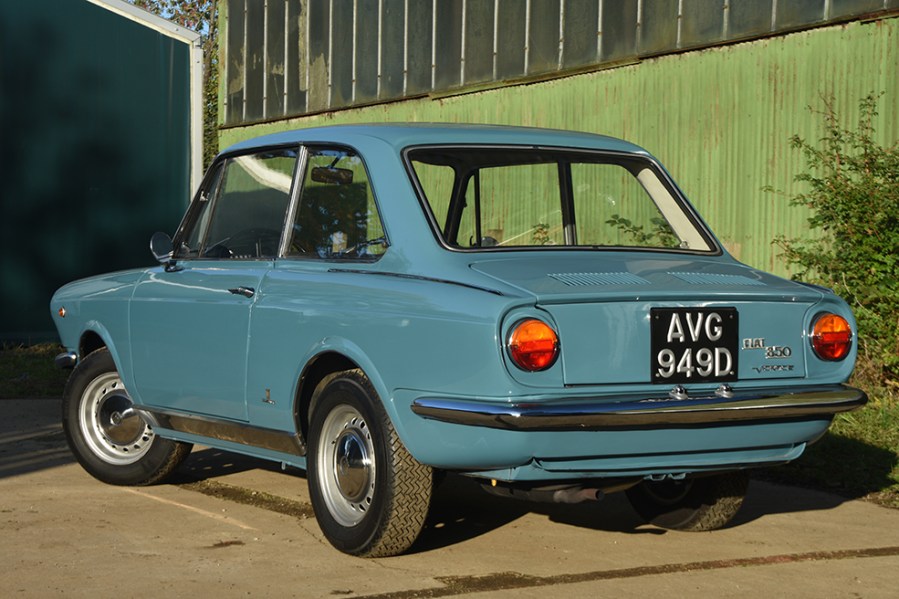
A fully trimmed interior, complete with wooden dash, padded door cards and the option of a radio gave the 850 an upmarket feel, whereas tuned engines and disc brakes on the Special and Abarth models gave it some sporting appeal. Tweaks to the engine allowed the 850 to comply with American emissions regulations, so the little Fiat even enjoyed a modicum of success Stateside – journalists praised the stylish design and fun driving experience, making the 850 one of the first small ‘import’ cars to break into the market. Not that America had all the fun with the 850 – in 1968, German manufacturer, NSU bought the rights to build it under license as the Neckar Adria, whereas SEAT in Spain produced the 850 with its own badging from 1969-1974, selling a remarkable 664,000 units in its own right.
Perhaps unsurprisingly, the 850 suffers from similar rot issues to other contemporary Italian cars, so survivors are increasingly rare and especially so if you’re looking for a 1964 example; rusty restoration projects can be had from £2000, but budget £6000 upwards for tidy roadworthy examples. If you fancy a roadtrip, we’d recommend buying one from continental Europe – preferably a drier climate.
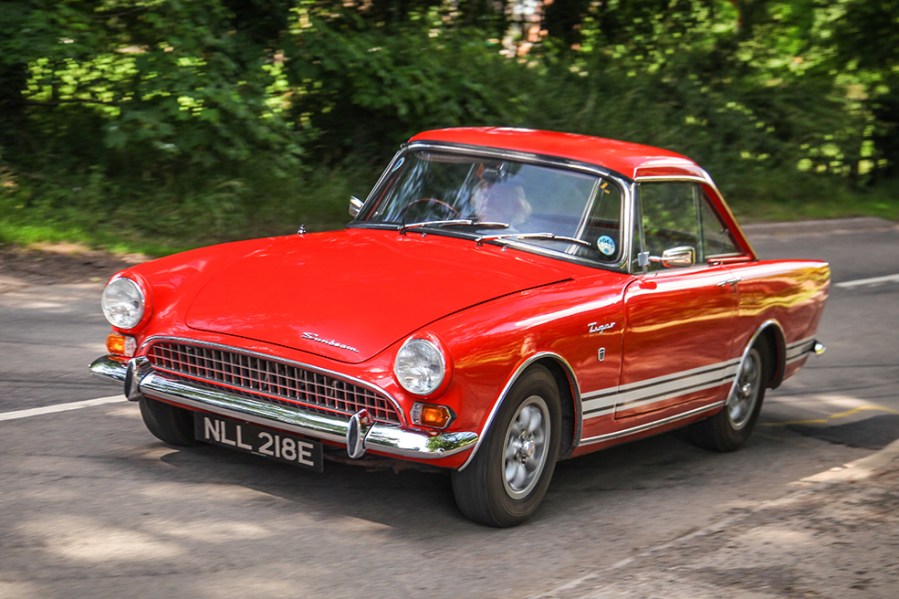
Sunbeam Tiger (1964–1967)
The Sunbeam Alpine was initially well-received, the stylish looks and nimble handling impressing Europeans. However, even with the later enlarged four-cylinder engines, it wasn’t quick enough for US racers and dealers. Jack Brabham had suggested a Ford V8-powered Alpine to Rootes competition manager Norman Garrad, who in turn mentioned it to his son Ian – the firm’s West Coast sales manager in the USA.
Excitement was growing in America for Carroll Shelby’s AC Cobra, which took a British roadster and endowed it with Ford V8 power. Various stories abound of how it happened, but essentially the same thing happened with the Tiger as the big American motor was craned into another British sports car. Two prototypes were built – one by Ken Miles with an automatic gearbox and the other with a manual at Shelby American. It’s also reputed that Enzo Ferrari was approached to help with engine development for the Alpine but an agreement was not reached.
Shelby’s prototype was shipped to England, where it gained approval from Lord Rootes despite being developed behind his back. Eventually the Tiger was launched in 1964 with a 260 cubic-inch (4.3-litre) cast-iron Ford V8. The cars were assembled in England by Jensen at West Bromwich rather than at Ryton – Shelby was initially hopeful that he would get the contract but was instead paid a royalty on each Tiger built. Right-hand-drive cars were sold in the UK from 1965.
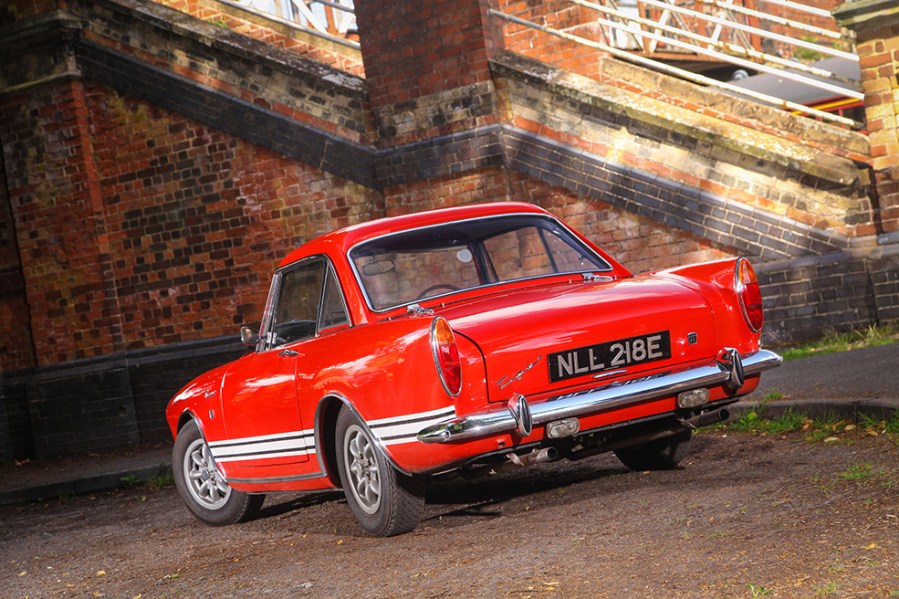
Producing 164bhp, the Tiger was capable of 120mph and 0-60mph in 8.6 seconds; big performance figures for 1964 that pushed the Rootes roadster close to Jaguar E-Type territory. Apart from the addition of a Panhard rod at the rear and stiffer front springs to support the heavier engine, the Tiger’s suspension and brakes were identical to the Alpine. It did get rack and pinion steering instead of a recirculating ball set-up, however.
In 1967 the Tiger Mk2 was introduced with a new and now iconic 289 cubic-inch (4.7-litre) engine that raised power from 160 to 200bhp and was identifiable by its ‘egg-crate’-style grill. However, with Chrysler now in control of Rootes, production was stopped in 1967 ahead of tough impending US regulations, and the awkwardness of selling a car with a Ford engine. Only 536 examples were built as the engine stocks were run dry, and all but 10 were exported. In all, just over 7000 Tigers were produced. Nowadays, the Tiger’s rarity and ‘baby Cobra’ status means prices are strong – few sell for less than £40,000 even in imperfect condition, and the Mk2 commands a premium.

Ford Corsair (1964–1970)
Ford’s Transatlantic-inspired Consul Corsair caused quite a stir when unveiled at the London Motor Show in 1964, though it wouldn’t go on sale until the following year. Following the demise of the Classic, the Corsair arrived as a new mid-size model to fit between the smaller Cortina and the larger Zephyr and Zodiac models.
Its unusual arrow-shaped snout gave it a very distinctive appearance that resembled the contemporary Ford Thunderbird, but it was otherwise conventional and was essentially a long-wheelbase reskin of the Cortina. Indeed, they shared the same windscreen and side windows, while the body’s internal panels were broadly similar too. Inside was pure American, with chrome-bezeled steering wheel, full complement of gauges in a wood-trimmed padded dashboard, and a chrome ski-slope centre console.
Initially available in two- or four-door guises, the car was offered with the 60bhp 1500 Kent engine at first, with the sportier Corsair GT getting a tweaked 78bhp unit. That was until September 1965, when Corsair adopted new Essex V4 engines. Somewhat noisy and rough, they made of mockery of the “seen but not heard” marketing tagline.
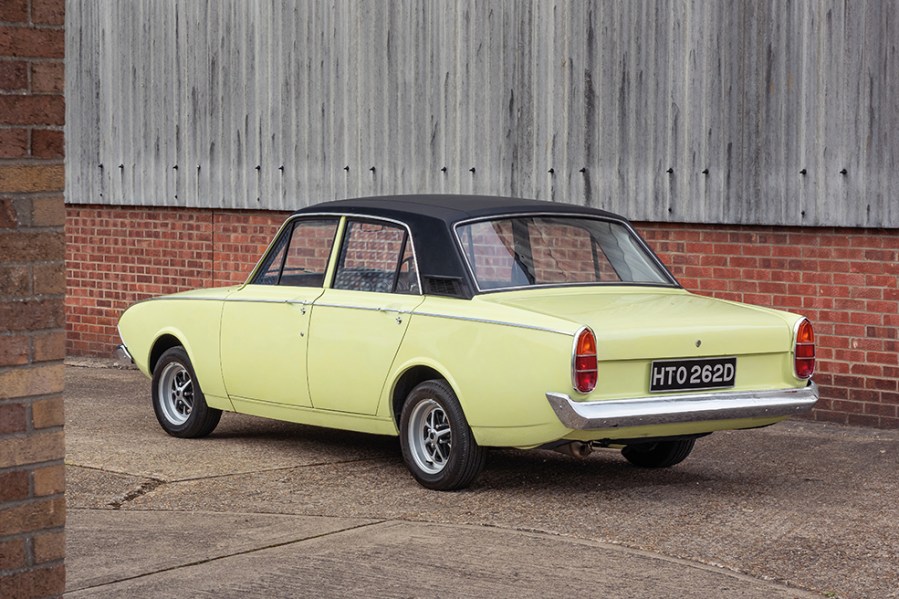
The initial 1.7-litre version produced 73bhp and was later joined by a 92bhp 2.0-litre in 1966 – a year that saw the Abbot estate and Crayford convertible versions appear. These were followed in 1967 by 2000E with its vinyl roof and plush features, but the Corsair was never a big seller despite being attractively priced. Over its six-year life, some 331,000 Corsairs were sold before it and the Mk2 Cortina were jointly replaced in 1970 by the larger Mk3 Cortina, which featured Detroit-inspired Coke-bottle styling.
For many years, the Corsair had a reputation as a car that couldn’t be given away. Today, it remains a left-field choice in the world of Blue Ovals, but that has kept prices surprisingly reasonable – around £8000 buys you a tidy specimen, double it for the best Corsairs on the market and when you look at contemporary Escorts and Cortinas, that looks a bit of a bargain.

